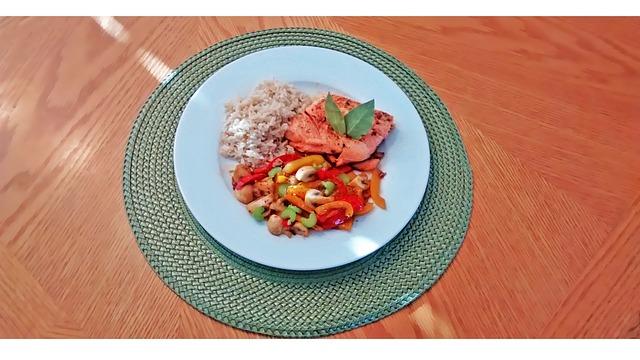In a world where culinary delights tempt us at every corner, understanding the calorie content of our meals can feel like unlocking a secret code to a healthier lifestyle. Imagine the thrill of knowing exactly what fuels your body, empowering you to make choices that align with your wellness goals. Welcome to the ultimate guide on calculating calories in your daily meals—a journey where science meets creativity, and numbers transform into insights that can elevate your eating habits. Whether you’re a culinary enthusiast eager to fine-tune your diet or someone simply curious about the hidden stories behind your favorite dishes, this article promises to equip you with the tools to navigate the world of calories with confidence and optimism. Let’s embark on this flavorful adventure together, one meal at a time, towards a vibrant and nourished you!
Mastering the Art of Calorie Counting
Embarking on the journey of understanding the calories in your daily meals can feel like unlocking a new level of personal wellness. With the right approach, you can transform meal planning into a delightful and empowering experience. Start by focusing on these key elements:
- Identify Your Baseline: Determine your daily caloric needs based on your age, gender, weight, height, and activity level. Online calculators or a consultation with a nutritionist can help you establish this crucial starting point.
- Understand Food Labels: Become a detective at the grocery store by learning to read food labels. Pay attention to serving sizes, total calories, and the breakdown of macronutrients.
- Track with Precision: Use apps or journals to log your meals, ensuring accuracy by weighing or measuring portions when possible. This practice not only aids in accountability but also enhances your awareness of eating habits.
By incorporating these strategies, you’ll not only gain control over your dietary intake but also cultivate a deeper appreciation for the food that fuels your life. Remember, consistency is key, and every small step is a victory towards achieving your health goals.
 Nutritional Labels“>
Nutritional Labels“>
Unlocking the Secrets of Nutritional Labels
Peering into the fine print of nutritional labels can feel like deciphering an ancient script, but understanding them is a powerful tool in mastering your diet. Calories, the quintessential unit of energy, play a pivotal role in managing your nutritional intake. To calculate them effectively, begin by noting the serving size and compare it with your actual portion. This is the key to ensuring you’re not underestimating or overestimating your calorie intake.
- Identify Macronutrients: Pay attention to the grams of carbohydrates, proteins, and fats. Each has a specific caloric value: carbs and proteins offer 4 calories per gram, while fats provide 9 calories per gram.
- Consider Hidden Ingredients: Watch out for added sugars and oils that can sneak in extra calories without you realizing.
- Use Apps for Accuracy: Leverage technology by using calorie-tracking apps to simplify your calculations and keep track of your daily consumption effortlessly.
By becoming adept at these calculations, you can tailor your meals to align with your health goals, turning each bite into a step towards a more energized and vibrant you.

Crafting Balanced Meals with Precision
Embarking on a journey to master the art of meal planning involves understanding the intricate dance of nutrients that fuels our bodies. Calculating calories in your daily meals is akin to painting with numbers; it’s about precision and balance. Start by acquainting yourself with the energy content of each ingredient. Embrace the power of nutrition labels and digital tools that offer detailed breakdowns of macro and micronutrients. Remember, a meal isn’t just about calories; it’s a harmonious blend of proteins, carbohydrates, and fats that creates the symphony of sustenance.
- Proteins: Think of lean meats, tofu, and legumes as your building blocks.
- Carbohydrates: Incorporate whole grains and fresh produce for sustained energy.
- Fats: Opt for healthy fats from avocados, nuts, and olive oil to nourish your body.
Once you have your ingredients laid out, use online calculators or apps to estimate their caloric contribution to your meals. Adjust portion sizes as needed to align with your personal energy requirements. The goal is to create a colorful plate that not only meets your nutritional needs but also delights your senses. Revel in the process of discovery, and let each meal be a testament to your culinary creativity and commitment to health.
Empowering Your Dietary Choices with Confidence
Understanding the calorie content in your meals is a crucial step toward achieving your health goals. By learning to calculate calories, you gain the power to make informed decisions about what you consume. To begin, consider these key components:
- Portion Size Awareness: Measure your ingredients accurately using kitchen scales or measuring cups to ensure you’re consuming the intended serving size.
- Ingredient Breakdown: Familiarize yourself with the calorie content of individual ingredients. Use reliable resources like nutrition labels or online databases to gather this information.
- Recipe Analysis: For home-cooked meals, sum up the calories of all ingredients and divide by the number of servings to find out the per-serving calorie count.
- Track and Adjust: Utilize apps or food diaries to monitor your daily intake, helping you stay on track and adjust as needed to meet your goals.
By taking control of your dietary choices, you not only embrace a healthier lifestyle but also cultivate a deeper connection with the food you consume. This journey towards nutritional empowerment is an opportunity to learn, adapt, and thrive.



